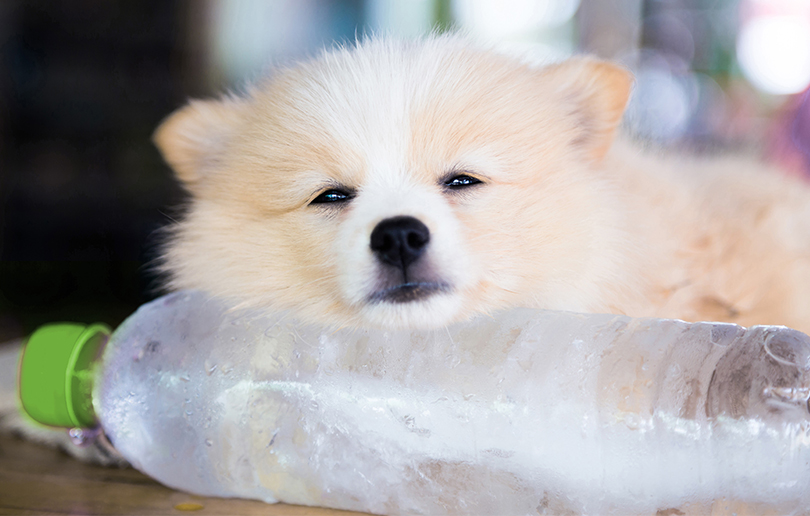How to keep your pets safe in the UAE summer
Temperatures are soaring. If you think you can’t bear the heat, imagine how your four-legged pet must be feeling right now. Here, Dr. Adrienn Krasznai, DVM Endocrinology/Internal Medicine from Blue Oasis Veterinary Clinic, reveals ways to detect heat stroke in pets.

If you live in a hot climate, where the sun is up for 15 hours, the temperature climbs to 45 Celsius and higher, and humidity reaches the point of 90%, chances are it may look like a beautiful day to be outdoors, but it’s quite the opposite for your adventurous four-legged pet. As parents of our furry friends, we have to be careful and alert, and look for tell-tale signs that disclose they’ve had enough of the outdoors and require a shaded area and to be cooled down.
Extra warm air temperature puts stress on your pets’ body, which makes them sweat through their paw pads and evaporate through their nose. To regulate their body temperature, they pant, leave their tongue hanging out and have their mouths wide open. Symptoms of overheating in pets include excessive panting, difficulty breathing, increased heart and respiratory rate, drooling, mild weakness, stupor or even collapse. In severe cases, the pet can also vomit, have seizures, bloody diarrhoea, and highly elevated body temperature. Pet owners should consider their animals temperament when they go for their regular walks because high energy dogs can continue walking and running until they are collapse during their activity.
In addition to this, it’s important to remember that pets can suffer from sunburn. It may sound strange, but it’s true with pets who have white fur and pink coloured skin underneath. If you use any sunscreen or insect repellent product on your pets, be sure they are labelled for use on animals. If you have an animal with long hair, feel free to trim their hair but do not shave it completely because the layers of dogs’ coats protect them from overheating and sunburn as well. Certain type of breeds are highly susceptible to overheating – like pugs and Persian cats, who have short nose and/or flat face – because they are not able to maintain their body core temperature through efficient panting.
Cement-concrete-asphalt or sand surface can reach extremely high temperatures during the day. Pets, being so close to the ground, can heat up quickly and their sensitive paw pads can burn as well. Take consideration and choose an area with grass. Always remember to carry lukewarm water and a small towel on your walk, to let them cool down their body – especially areas with less hair, for example on the belly, lower legs and on the top of the head.
It’s also important to remember to never leave your pets in an unventilated-vehicle for any period of time, where temperature can rise enormously high in a very short time. Not only can it lead to fatal heat stroke, it is illegal in several countries. Once you return home from outdoor activity, offer them fresh drinking water and rinse their coat with fresh water from possible chlorine or salty water, if they just went swimming. If they can’t drink due to heavy panting, you could give them small ice cubes to swallow.
A good-responsible pet owner should take their pets for a vet check before summer, because elderly, sick or overweight animals and those who have lung or heart diseases have less tolerance to the extreme outdoor temperature. Animals with these conditions should be kept cool, in air-conditioned rooms, as much as possible. In certain countries, where the heartworm exists, pets should be tested for it before warm season.
So please remember, if you can get hot and dehydrated, so can your pets. Treat your furry friends as you would like to be treated yourself.
Details: For more information, please visit blueoasispetcare.com












Comments